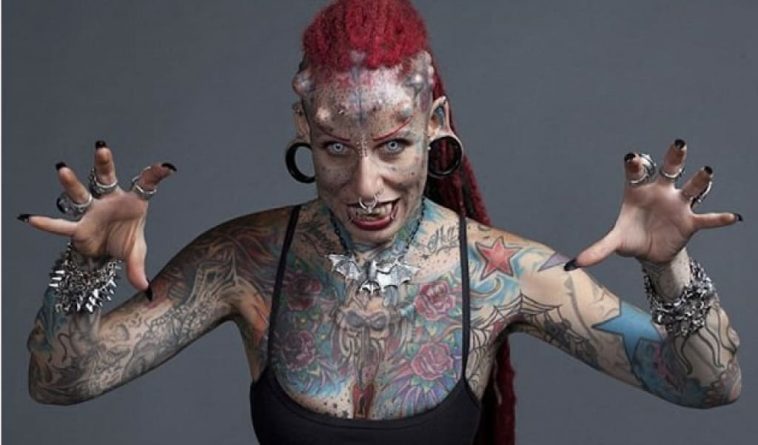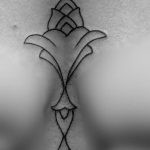
The world is full of extremely talented tattoo artists, with roughly 21,000 tattoo parlors in the US alone, and an industry that is swelling in size all around the globe. Because tattooing is also an artform that spans thousands of years and dates back to the earliest forms of self-expression in human prehistory, it’s impossible to narrow it all down to an accurate top 10 list of living legends, let alone a top 10 of humanity’s greatest tattoo artists.
But we did want to pay a little homage to the ten arguably most influential and important artists of the last few decades. While this list should include many more names, these are our own ten choices, and they serve to offer a quick and shallow look into the extreme multitude and complex history of tattooing, with countless different styles, cultures, and emerging techniques.
From the centuries-old practice of horimono and irezumi in Japan, to the black-and-grey Chicano style developed in 1970’s Los Angeles, to the ancient tatau practices of the Samoan, we hope this list gives readers an idea of how diverse the tattoo world can be.
Horiyoshi III

Horiyoshi III was born Yoshihito Nakano and took on his artist name in honor of his mentor and master, Horiyoshi I (born Yoshitsugu Muramatsu). The 73-year-old is arguably the world’s most famous full-body horishi, or Japanese tattoo artist, specializing in traditional Japanese tattoo art, or irezumi. Horiyoshi III’s dream of tattooing began when he first came across the full-body tattoos of a local gangster (yakuza) at a public bath house when he was young. Since earning his title in 1971, Horiyoshi has gone on to publish several works on the art of Japanese tattooing. While he has stopped taking on new clients, Horiyoshi III currently has one apprentice, his son Souryou Horiyoshi.
Freddy Negrete
Featured on the History Channel, Freddy Negrete’s contributions to the Chicano tattoo style are legendary, and he’s considered a pioneer in the realistic black-and-grey style that is prolific in LA and the rest of the tattoo world.
His tattoos also famously adorn a number of celebrities, and he’s done work in several Hollywood productions, although his arguably greatest achievement is elevating the Chicano style over the course of several decades.
Don Ed Hardy

Don Ed Hardy is probably the biggest name in contemporary American tattoo history, and some credit him with bringing the art out of the fringes of society. His work was front and center as tattoos were becoming mainstream, famous for being colorful, expressive, and even ‘kitsch’. Starting with his fine arts training in the 1960s, Hardy’s fascination with tattoos brought him to Horihide, an irezumi master in Gifu, Japan.
Returning to San Francisco, he incorporated what he had learned in school with what he learned in Japan, blending his traditional art training with the Japanese style, and pioneering a brand of artistry that emphasizes making each piece unique and from scratch, rather than selecting flash tattoos off a wall.
Filip Leu
Another prolific artist, Filip Leu was born into a family of artists and began tattooing others at the tender age of 12, making it is full-time calling when he turned 15. His childhood involved often helping out while his parents worked on tattooing clients in their shop, and his talent was apparent early on. At age 17, Leu traveled to Japan and encountered a bodysuit, which influenced him greatly.
Although Leu’s style is greatly influenced by Japanese art, he himself defines it as “a little bit of American, a little bit of Indian, a little bit of Rock ‘n’ Roll. I like to mix. I am not Japanese, so I don’t have the full understanding of it, and I don’t study enough.”
Su’a Sulu’ape Alaiva’a Petelo
Brother to the late Su’a Sulu’ape Paulo II, Petelo is a Samoan tattoo artist based in New Zealand, and a master of traditional Samoan tattoo art. Petelo’s fascination with tattooing began after visiting a convention in Rome in 1985, at the invitation of Don Ed Hardy.
Both he and his brother Paulo worked throughout Europe, and Paulo was well-respected for his skill and dream to bring the Samoan tradition past its original community. After Paulo’s murder in 1999 at the hands of his wife, Petelo took up his mantle and continued the artform.
Maud Wagner
Maud Wagner (née Stevens) was a 19th and 20th century contortionist and circus performer, as well as the first female tattoo artist in the United States. She became enamored with tattoos around the same time as she became enamored with her would-be husband, Gus Wagner, who was previously a sailor, and covered in tattoos.
Gus taught her the craft, and together they passed on their knowledge to their daughter, Lotteva. Although the tattoo machine had already been invented at the time, Maud and Gus still tattooed clients in the traditional hand-poking style.
Leo Zulueta
Famous for bringing the tribal and neo-tribal tattoo style into the American mainstream, Leo Zulueta is a Filipino-American tattoo artist known for his full-body tribal work, influenced by his time spent in Hawaii, Samoa, and Tahiti.
Inspired by Don Ed Hardy to start tattooing on his own, Zulueta specializes in traditional as well as adapted and original tribal designs. His designs in turn influenced the growth of the tribal style in modern-day tattoo art. Although he’s retired, his influences are timeless, and often cited as inspirations for many artists today.
Henk Schiffmacher

Dutch-born Henk Schiffmacher has been described by Red Hot Chili Peppers frontman Anthony Kiedis as “an underground philosopher, artist, Hell’s Angels associate, booze hound, drug hound, girl hound, an absolute rapscallion of Dutch proportions.”
Schiffmacher’s clientele included Kurt Cobain, Ian Fraser “Lemmy” Kilmister, and various members of Pearl Jam and RHCP. His tattoo history began in the 1970s and 1980s, and he’s well-known as an author of several books on the subject of tattooing, as well as his tattoo museums.
Whang-Od
The last mambabatok of the Kalinga people, Whang Od Oggay is over a hundred years old, and is a living breathing tattoo legend. The Kalinga are a mountainous tribe living in the autonomous Cordillera region, in the Philippines, famous for their headhunting warriors. While those days are largely over, Whang Od remembers adorning her tribe’s warriors with commemorative tattoos for their various kills, especially during the Japanese occupation in WWII.
Since 2009, Whang Od has been tattooing visitors and tourists who manage to make it to her village in traditional Kalinga symbols of protection and warding, although she seems to be on the verge of retiring. Her tattoos are hand-tapped and include simple animal motifs and geometric shapes. Although the mambabatok is traditionally male and serves an important role in ceremonially marking warriors for their brave deeds, Whang Od’s talent at an early age marked her as the best person to carry the tradition on well into her final years. She has taught her nieces the art of Kalinga tattooing, although with the end of the village’s headhunting days comes the end of the traditional mambabatok role.
María José Cristerna
Known as the most tattooed woman in the world, María José Cristerna defies stereotypes and exemplifies the extremes of body modification, embracing her journey towards becoming the ‘Jaguar Woman’ as an important part of her own fight against domestic violence, and injustice.
A Mexican-born lawyer and tattoo artist, Cristerna is a dedicated activist and helps women in her local conservative community seek help and advice against marital issues. The rate of domestic violence in Mexico is astounding, and her own journey into tattooing and body modification began after she left her ex-husband, after several years of physical and mental abuse.
The tattoo exists in many shapes and forms, which is one reason for its undying beauty. Whether it’s a symbol of protection, a work of art, something deeply personal; whether it’s tapped by hand, by machine; whether it’s traditional, or experimental; tattoos can express countless sentiments and their history is as ancient as we are. Every one of these people played a role in helping the artform thrive, or transforming it into something new, or calling attention to its importance and existence, and their peers continue to keep tattooing alive for new generations to come.


